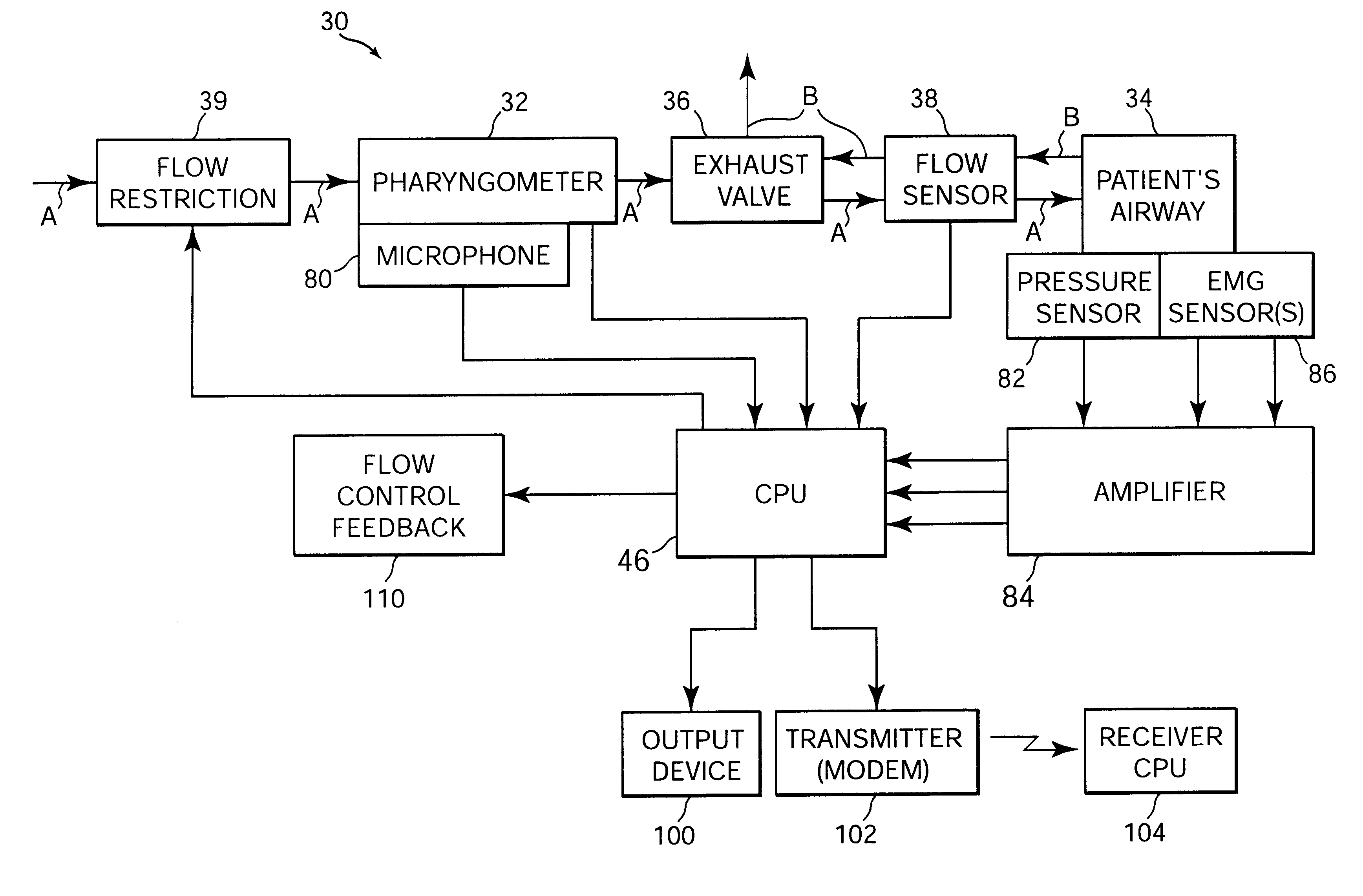Breathing disorder prescreening device and method
a breathing disorder and prescreening device technology, applied in the field of apparatus and methods for diagnosing breathing disorders, can solve the problems of hypersomnolent sleep apnea patients at risk for excessive mortality, sleep fragmentation and complete or near-complete cessation, and possible severe degrees of oxyhemoglobin desaturation
- Summary
- Abstract
- Description
- Claims
- Application Information
AI Technical Summary
Benefits of technology
Problems solved by technology
Method used
Image
Examples
Embodiment Construction
FIGS. 1 and 2 schematically illustrate a diagnostic device 30 according to the principles of the present invention. There are slight differences between the devices illustrated in FIG. 1 and FIG. 2 to illustrate alternative embodiments and additional optional features of the present invention. The nature of these differences will become clear upon reviewing the following discussion.
The central features of diagnostic device 30 include: a first sensing system that determines a dimension of a portion of the patient's airway, a second sensing system that determines an internal load imposed on the patient's airway, and a processor that, based on the information from the first and second sensing systems, determines a likelihood that the patient suffers from a breathing disorder, such as OSA. In a preferred embodiment of the present invention, the dimension measured by the first sensing system is the cross-sectional area of the patient's airway. The present invention monitors the patient's...
PUM
 Login to View More
Login to View More Abstract
Description
Claims
Application Information
 Login to View More
Login to View More - R&D
- Intellectual Property
- Life Sciences
- Materials
- Tech Scout
- Unparalleled Data Quality
- Higher Quality Content
- 60% Fewer Hallucinations
Browse by: Latest US Patents, China's latest patents, Technical Efficacy Thesaurus, Application Domain, Technology Topic, Popular Technical Reports.
© 2025 PatSnap. All rights reserved.Legal|Privacy policy|Modern Slavery Act Transparency Statement|Sitemap|About US| Contact US: help@patsnap.com



